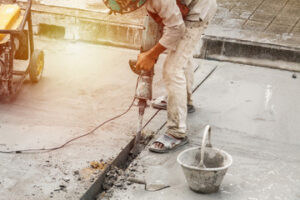Plumbers Bradenton install, maintain, and repair the pipes that carry water and waste to and from homes and businesses. This technical career requires strong attention to detail and the ability to solve problems quickly and effectively.

Plumbers also work on construction sites, interpreting blueprints and plans to lay out piping systems and connect fixtures and appliances. They often work evenings and weekends to respond to emergency calls.
One of the most common plumbing repairs is for dripping faucets. Leaking faucets can not only waste water and money, but they also contribute to moisture damage in your home. Fortunately, repairing a dripping faucet isn’t as difficult as it seems. With a little know-how and some replacement parts, you can tackle most leaky single-lever kitchen or bathroom faucets in about an hour.
If the leaking is around the handle or spout, start by turning off the water supply valve under the sink. Then remove the handles with a screwdriver and pry off any decorative caps to expose the Allen screw that holds the handle(s) on. Twist the screw counterclockwise to release the handle(s) and pull them off. Now you can access the spout assembly. Using a flathead screwdriver, pop the cap off the top of the faucet to reveal the screws that need to be removed with a hex key or wrench. If you have cartridge stems, loosen the retaining nuts and pull out the stems. Now you can access the O-rings under the handles that need replacing. Replace the O-rings, making sure to coat them with nontoxic plumber’s grease, and reassemble the faucet.
Leaks in the spout are typically caused by worn O-rings, which can be replaced with a kit that’s available at most hardware or home improvement stores. A plumbing supply specialist may have the best selection of replacement O-rings for a particular faucet type, and they’re more likely to have a wrench to help you tighten the new rings.
Another common source of leaks in the spout is the ceramic disc valve that controls the flow of water. This type of valve is sturdy and reliable, but if the disk is worn or the seat is pitted, you’ll need to replace it with a new one. To do this, take the old one to a home center or plumbing supply store to match it with an identical replacement.
Other common leaks are caused by worn washers that rest against the valve seat and cause friction over time, leading to wear and eventually a leak. These can be replaced by a simple washer, which you’ll find in a kit at most hardware or home improvement stores.
Cartridge Replacement
Cartridges are like the spark plug of a car engine: They last for years but eventually need replacing. Cartridges come in various shapes and sizes, but they all work the same way: a quarter-turn movement opens or turns off the water. The cartridge must be compatible with the faucet handle—the number of splines or grooves on the stem must match the number in the handle.
The first step in replacing a cartridge is to remove the decorative ring (sometimes called a cap) that covers the control lever and set it aside. Next, loosen the cartridge retaining ring that holds the cartridge in the body of the faucet. Some are easy to remove with pliers, but others require a special cartridge puller available at hardware stores or home centers.
Ball Replacement
Plumbers install, maintain, and repair the pipes and fixtures that deliver water, waste, and heat to residential, commercial, and industrial buildings. Their work ensures that occupants have clean, freshwater to drink, that waste is properly conveyed away from living spaces, and that heating systems distribute heat effectively.
Plumbing is a trade that requires extensive training and certification to practice. Plumbers must be familiar with a wide range of tools and systems, from basic hand tools to advanced power equipment. They must also be able to understand and follow complex building codes and regulations. Plumbers often specialize in a particular area of the field, such as sanitation, drainage, or gas systems.
Most plumbers gain their skills through a formal apprenticeship. This option allows apprentices to learn from experienced professionals while earning a steady income. Others attend vocational school to complete a certificate program in plumbing or another related trade. Some plumbers choose to become independent contractors, which gives them more control over their schedule and choice of projects.
New construction projects provide a unique opportunity for plumbers to work on large-scale plumbing systems. On these jobs, they may be responsible for laying out plumbing infrastructure according to blueprints and architectural plans. This can involve installing piping, setting toilets, and connecting appliances such as dishwashers or washing machines. Construction sites also require plumbers to collaborate with other construction tradespeople, including carpenters and electricians.
Plumbers must have strong critical thinking skills to identify and resolve problems. They must be able to weigh different options and find solutions that are both efficient and cost-effective. They also must have excellent customer service skills, as they often interact with clients to explain their services and costs.
Because plumbers are often on their feet for long periods of time and need to lift heavy objects, they must have physical strength and stamina. In addition, they may be exposed to dangerous chemicals and sewage, so they must take proper safety precautions. Becoming a plumber can be a rewarding career, but it takes a lot of dedication and commitment to learn the necessary skills.


